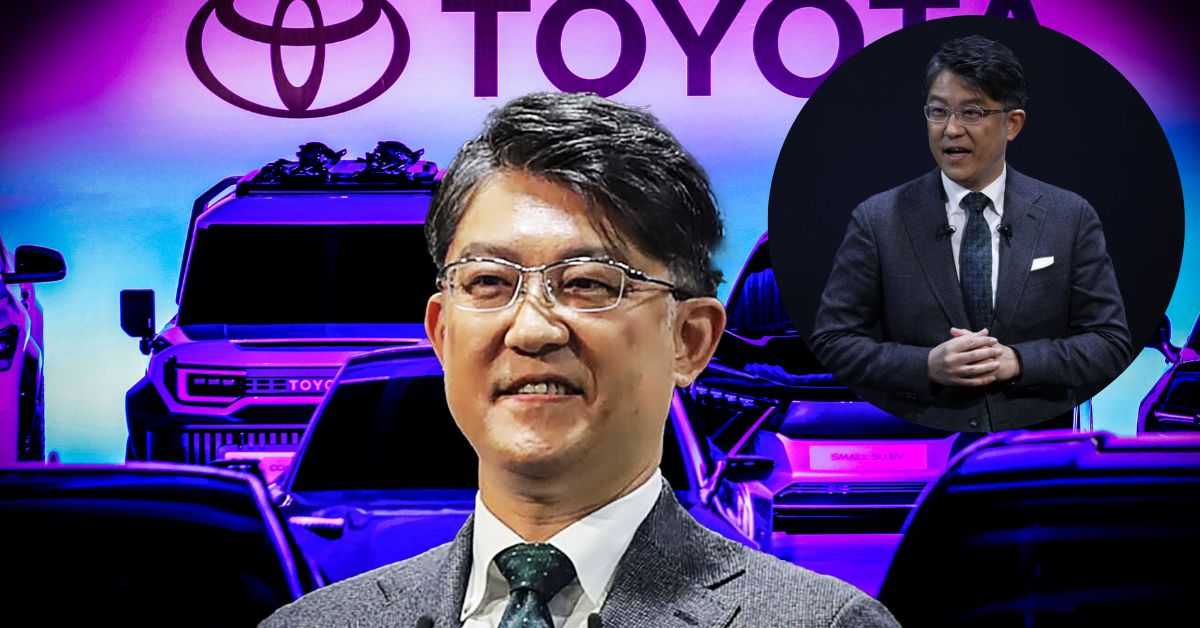The 53-year-old new CEO of Toyota Motor unveiled on Thursday, is being closely watched since he must now lead the business through a short and quick race against new rivals and manufacturing challenges in the auto sector.
Two weeks before the unexpected announcement made yesterday, Koji Sato made an appearance at a motor show close to Tokyo, giggling and joking with the company’s president and CEO Akio Toyoda as he introduced him as the owner and ardent enthusiast of the AE86, a rare Toyota sports car from the 1980s that has drawn a large following.
“I love making cars. That’s why I want to be a president that continues to create cars, to show what Toyota should be in the shape of cars,”
Sato stated during his maiden press conference as the incoming president on Thursday.

Sato, a 1992 Waseda University mechanical engineering graduate, has spent the last three decades designing Toyota automobiles, including the Prius, the company’s flagship hybrid vehicle, and a hydrogen-powered Corolla racing car. Formerly the company’s chief engineer, he is currently Lexus’s president.
Toyoda cited the experienced engineer’s ability to “work hard on the scene of automobile manufacturing to acquire Toyota’s philosophy, skills, and manners” as the primary justification for Sato’s appointment.
According to analyst Seiji Sugiura of the Tokai Tokyo Research Institute, the chief engineer’s job is “like a quasi-president.” It entails “coordinating hundreds of engineers involved in the car manufacture.” Despite not being the top contender to succeed Toyoda, Sato’s career demonstrates his managerial abilities as “certifiable.”
An executive who has known Sato since his early days claims that the engineer has “never displayed any signs of discomfort” and has always maintained an “energetic personality and a hands-on approach.” He believes nothing novel can be produced unless everything is pushed to its absolute maximum.
However, despite yesterday’s unexpected news, Toyota’s shares barely moved in Japan and the United States, showing investors’ ambiguity about the unanticipated new CEO. They were trading at 1900.5 yen at Friday’s closing in Tokyo, an increase of just 0.4% from the day before.
Sato has been charged with “full-model-changing” Toyota from a carmaker into a “mobility company” as the new president of Japan’s largest automaker and most valuable company. The long-standing carmaker must adapt quickly to the changing idea of automobiles brought on by technical advancement in new CASE fields, like connected, autonomous, shared, and electric.
Responding to the market expansion of electric vehicles, which will likely be the industry’s next front in the fight to reduce transportation-related CO2 emissions, is a crucial issue. Honda Motor and General Motors, competitors both domestically and internationally, are focusing on EVs. At the same time, the trend encourages younger businesses like Tesla and BYD to increase their position in the market.

On the other hand, Toyoda has remained true to his stance on the “multi-solution approach” to the climate challenge, highlighting not only EVs but also hybrids and hydrogen-powered vehicles.
Sato reaffirmed this viewpoint in a video clip during the news conference on Thursday.
“Going electric is not the only way to achieve this goal. … You have to take a 360-degree approach to carbon neutrality.”
Toyota is currently dealing with other problems. Increased material costs threaten the business’s profitability. It anticipates a net profit of 2.36 trillion yen ($18.15 billion) for the entire fiscal year, a decrease of 17% from the previous one.
Want some related articles? We have covered some top articles. You can check the…
- Who is Tee Morant? Father of an American Basketball Player!
- Who is Kim Petras? Why is She Famous?
- Who is Sam Smith? How Did He Become Famous?
A lack of semiconductors has also hindered the company’s production plans. With a 10% downward risk fluctuation range because of the uncertain effects of parts supply shortages, it has set a cautious projection for a maximum production output of 10.6 million units for 2023. It had to lower its production projections throughout the previous year regularly.
In the medium term, Sugiura of Tokai Tokyo is skeptical that Toyota would change under Sato’s leadership.
“Toyoda will likely continue to influence the company’s operations, and Sato doesn’t seem the type to do things his way without consulting Toyoda.”
However, the 66-year-old incoming chairman admitted Monday that he is an “old-fashioned person” who finds it challenging to comprehend contemporary ideas. He claimed he had reached his “limits” as Toyota’s CEO and could not take the organization beyond the role of a “carmaker.”
The younger Sato is anticipated to overcome Toyoda’s difficulties with adaptability and resiliency. “Sato will probably hold his post for around ten years,” Sugiura said. “Perhaps we’ll witness anything during that time.”
